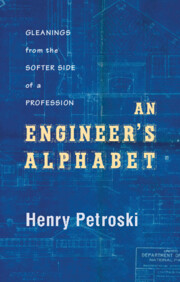F
Published online by Cambridge University Press: 25 October 2011
Summary
factor of safety. In structural engineering, a factor of safety is effectively the ratio of the theoretical failure load of a beam, column, or other component to the largest actual load it is designed to carry. A factor of safety provides assurance against such uncertainties as the design load being exceeded in service, the statistical variation in the strength of materials, and the occurrence of detrimental effects during the construction and life of a structure. Factors of safety have historically varied from only slightly greater than unity, in structures where excess strength (which generally equates to excess weight) cannot be tolerated, as in spacecraft, to as high as 6, 7, 8, or even more in civilian structures whose behavior is not completely understood or whose failure would have life-threatening or severe economic consequences, as in mid-nineteenth century railroad bridges. By extension to non-structural applications, employing a factor of safety implies being conservative in design, the structure or component having reserve capability for unusual situations. The factor of safety is sometimes referred to as a “factor of ignorance” because it is intended to take into account unknown contingencies. Euphemisms such as “design factor” and “design margin,” which are sometimes used, mask the life-protecting implications of the term factor of safety.
Factors of safety in living organisms have been discussed in an article by the physiologist and biogeographer Jared Diamond.
- Type
- Chapter
- Information
- An Engineer's AlphabetGleanings from the Softer Side of a Profession, pp. 101 - 127Publisher: Cambridge University PressPrint publication year: 2011



